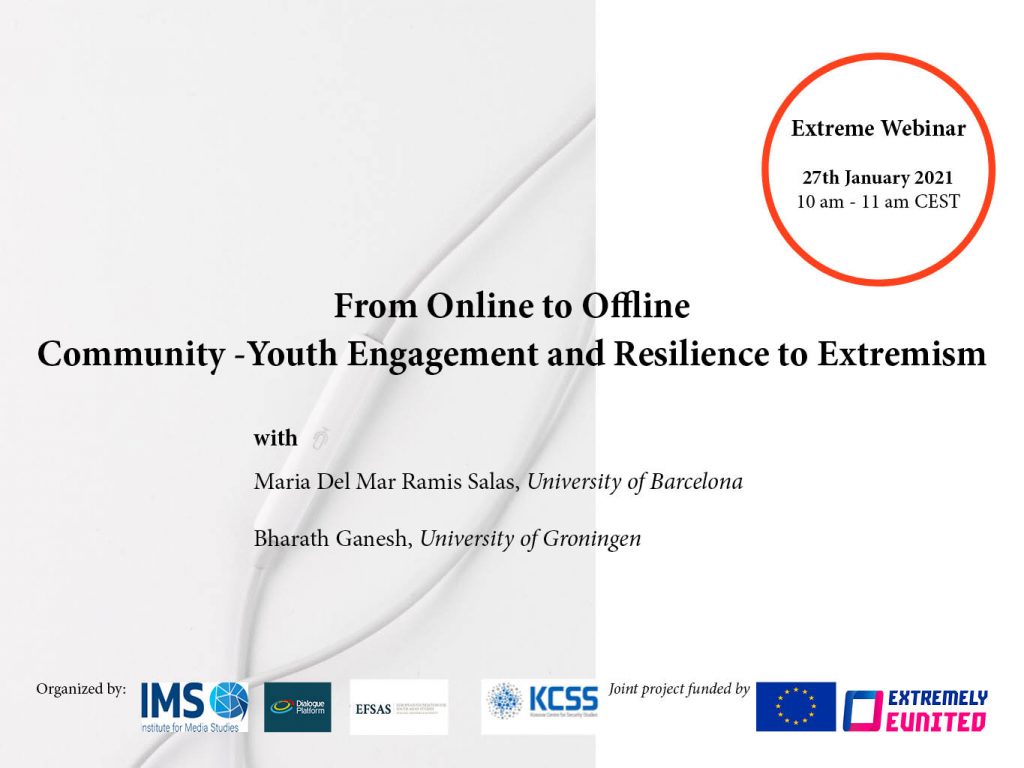Registration link: https://forms.gle/cz1s6ZchdrDGEteWA
On November 4th and 5th, 2020
KU Leuven (Institute for Media Studies), will organize two interdisciplinary webinars to present research on online “extremist” ideologies, specifically tackling two narratives: Islamist extremism-radicalism and Islamophobia.
The last decades have witnessed an increase in hate discourses, sentiments and practices from and to Muslims, simply categorized as Islamic extremism and Islamophobia in online media.
Concerns over hate discourse from/to Muslims have become a prominent feature in public discussions. The recent events and evidences demonstrate that these two extreme ideologies travelled across local contexts to become a global phenomenon with the arrival of populist parties and movements (Abbas, 2019).
On the one hand, over the last years, populist parties and actors have mobilized an important number of people through campaigns, and have radicalized mainstream politics. They reshape the existing social and political cleavages at national and global level.
On the other hand, in addition to these populist waves, the Jihadi Islamist movements added to the polarization of social and political debates by engaging in violent actions.
These two related concepts and discourses feed each other and create a vicious cycle that increases public hostility towards either a minority or a majority of people, sustaining an atmosphere of fear and radicalising their supporters in committing violence. Each phenomenon is originated from various national, local social-economic and religious contexts that manifest the different appearances of hate discourses in several places, especially in the virtual world. As with many issues in the debate on radicalization, there is also non-agreement on online radicalization and how it develops.
What role do media play in the radicalization and how do we measure it?
What is the influence of online interactions in producing violence?
The discussion did not start with the radicalization as online violent groups use the web in order to convey their messages; however, with the jihadi attacks the online, radicalism and terrorism turn into a new phenomenon. The discussion illustrates how the so-called Jihadisphere (Conway, 2012; Ducol, 2012) and islamophobia sphere receive an imminent place in the research of radicalization by studying the various types of online violent ideologies, the diversity of platforms, social media channels, the online countermeasures developed by governments and private companies. Making use of digital and social media platforms and through online interactions, the Jihadist propaganda and discourse find a channel to disseminate online hate messages, especially on YouTube, Twitter, Facebook, Tumblr, Instagram, and Telegram (Awan, 2016 & 2017; Frissen et al., 2019). The social media shift the warfare frontlines and significantly define the Muslim extremists’ and Islamophobia’s operational strategies. Social media platforms, according to some researchers, extend the radical mobilization and recruitment process to functional and real-life connections. Every single platform is used for various purposes. For example, Facebook groups enable terrorists to find new people searching information on a specific topic related with migration, religion, and identity (Weimann, 2014). While Twitter becomes the main channel of dissemination targeting and orienting to different kinds of content (Fisher & Prucha, 2013), YouTube creates a community with a subculture (Weimann, 2014) allowing the exchange of comments on videos, etc. Other platforms such as Instagram and Flickr create an imagined world with figures and revolutionary scenes (Krona, 2020). Given this diversity, our aim is to broaden the research on the online radicalism field by linking it to various spheres and themes such as prevention, youth extremism and by inviting new interdisciplinary perspectives.
The workshop also seeks to provide a platform for the interaction between researchers and practitioners working in the field. “

